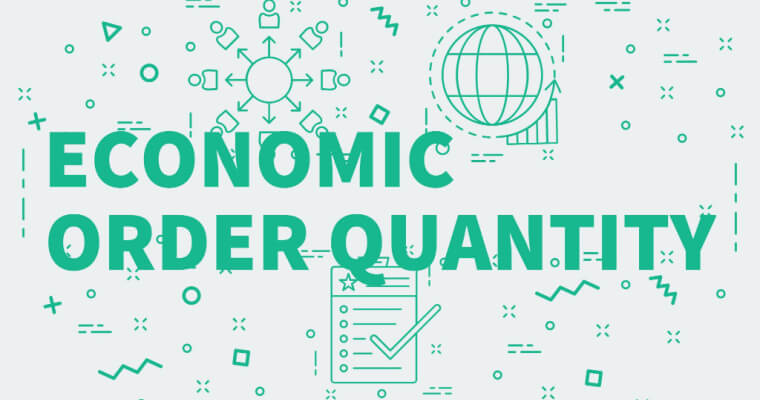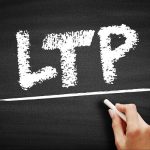How Implementing Economic Order Quantity (EOQ) Could Drive Effective Inventory Management

Economic Order Quantity (EOQ) is a metric that helps determine the optimal order quantity a business should buy at a given time to minimise inventory costs. Ideally, businesses should have enough stock to meet the demands of the consumers to avoid missing sales opportunities.
Conversely, they should not have too much inventory, which leads to overwhelming storage costs and adversely affects cash flow. With the help of this formula, businesses can strike the right balance between the volume and frequency of orders that yield the best financial results.
Read on to get an in-depth understanding of EOQ, its components, and its benefits.
What is Economic Order Quantity (EOQ)?
Economic Order Quantity (EOQ), also known as optimum lot size or economic lot quantity, is a retail metric that helps businesses establish the optimal order quantity they should procure to meet consumer demand and simultaneously minimise cost per order. It takes into account the ordering costs and the carrying costs to reach an inventory level which prevents shortages or stockouts.
The Economic Order Quantity model was first introduced in the year 1913 by Ford W. Harris. It has since helped businesses establish the inventory levels and order quantities that work best for them without hampering cash flow or ability to meet demand.
The primary objective is to reduce the inventory costs for the retailer by answering the two most pivotal questions:
- What should be the volume of the order?
- What should be the frequency of procurement?
If a business wants to remove the element of guesswork from the scope of inventory management, the EOQ model can come to its rescue.
Why is Economic Order Quantity (EOQ) Important?
Inventory costs are a significant expense for a business, and miscalculating the inventory level can negatively impact profit margins. The economic order quantity can provide the basis for an efficient inventory management system.
By effectively using the EOQ model, you will know exactly how much inventory you need without it becoming a liability for the business. Implementing EOQ can help companies reduce the margin of error in replenishing inventory, avoid mismanagement of working capital and maintain a healthy profit.
Also Read
Economic Order Quantity (EOQ) Formula
Introducing EOQ is an essential step for a business to help it benefit from economies of scale concerning inventory management. But how do you calculate the EOQ? While there are economic order quantity order calculators available, it is vital to know the formula that determines the calculation of the EOQ for a business.
There are several formulas to calculate Economic Order Quantity. However, the most common Economic Order Quantity formula is:
Q = √2DS / H
Where,
- Q = Number of EOQ units
- D = Demand rate or the number of units sold per year
- S = Setup cost or order cost
- H = Holding cost or carrying cost
Let us look more closely at the components of the EOQ formula.
- Demand rate: It is the annual requirements for a product or the units of the product sold per year.
- Setup cost: Also referred to as the ‘ordering cost’, the setup cost is the cost per purchase. Calculated on a per-order basis, it includes the shipping and handling costs.
Ordering cost = Number of orders per year × Cost per order
- Holding cost: Also known as ‘carrying cost,’ holding cost is the total cost of maintaining the inventory, including storage costs, employee salaries, opportunity costs, and depreciation costs. .
Holding cost = Average number of units × Carrying cost per unit
EOQ Calculation Example
Let’s apply the Economic Order Quantity formula to a hypothetical situation.
Imagine a garment retailer, XYZ, who wants to restock its inventory. They need 50,000 units of brand-name jeans to meet the demand (D) per year. The ordering cost (S) is $50 per order, and the holding cost (H) is $0.50 per unit.
Following the EOQ formula,
Q = √2 × 50000 × 50 / 0.50 = 3162.277
Therefore, according to the EOQ model, the optimal order quantity for XYZ garment retailers is 3162 units (approx.).
By putting forth this Economic Order Quantity example, we illustrate how valuable (and easy) the calculation can be for businesses in establishing the optimal order quantity that neither overwhelms nor underwhelms the inventory management system.
Factors that Affect Economic Order Quantity
The two most important factors that affect Economic Order Quantity are:
1. Procurement Cost
Procurement cost is also known as the cost of acquisition. It is the total cost incurred by adding the cost of obtaining quotations, placing orders, following up, receiving delivery, inspecting the order received, and bill payment. It also includes the salaries of employees involved in the procurement process.
2. Carrying Cost
The carrying cost, or possession cost, is the total cost incurred for insurance, storage, preservation, depreciation, and interest on the value of the stock (including handling costs). The carrying cost varies depending on the product and the plant.
The Benefits of Economic Order Quantity (EOQ)
Now that we have explored the fundamentals of the EOQ model , let’s explore the benefits it lends to a business.
1. Helps Avoid Overstocking
The Economic Order Quantity formula helps a business estimate the optimal quantity of inventory that should be repurchased. By establishing an optimal amount, businesses can avoid ordering excess stock that helps maintain a healthy cash flow, reduce inventory costs (including handling and storage), and manage depreciation costs.
2. Prevents Stockouts
An efficient inventory management system keeps track of the demand for a product and the stock at hand so that no consumer faces an indelible situation where a product is ‘out of stock.’ EOQ prevents missed opportunities for selling products because there is no inventory and improves order fulfilment.
3. Lowers the Cost of Storage
The optimal order quantity can significantly reduce storage and allied costs, as the business will have neither an excess nor a lack of a product. It lowers the cost of storing products and efficiently uses the facilities without burdening the bottom line.
4. Reduces Waste
The right amount of inventory can significantly cut down on obsolete inventory. The dead weight of having to store dated or spoiled inventory, especially in the case of perishable products, can negatively impact a business’s cash flow. Adopting EOQ can resolve this issue.
The Limitations of Economic Order Quantity (EOQ)
There are several benefits to determining the Economic Order Quantity for a business. Nonetheless, there are certain limitations of the model, as mentioned below:
1. Poor Data Quality
Outdated or poor-quality data can severely hamper the accuracy of the calculations. It is essential to have access to reliable information for efficiently using EOQ in inventory management.
2. Changing Consumer Demand and Seasonality
Moreover, the EOQ model assumes that product demand is constant throughout the year. It’s not the case in reality, where demand for most products changes across seasons and with consumer preferences.
3. Growth or Decline of Business
Businesses grow or decline with time, and some may witness meteoric changes. The Economic Order Quantity formula prioritises consistency over change. Therefore, it is a more reliable metric for businesses that have stabilised their growth trajectory as it may lead to overstocking or understocking in other scenarios.
Also Read
Final Word
The Economic Order Quantity (EOQ) can emerge as a saviour for businesses by removing the guesswork from the equation of determining the optimal order quantity to be purchased.
With a user-friendly formula, the metric can resolve some of the most common inventory management issues that plague businesses and make the decision-making process smoother.
FAQs
Ans. Economic Order Quantity (EOQ) is a metric that helps businesses determine the optimal order quantity they need to purchase to meet demand and minimise inventory costs. It is also known as optimum lot size or economic lot quantity.
Ans. Economic Order Quantity (EOQ) is necessary for businesses to strike the right balance between demand and inventory. Estimating the optimal order quantity can improve cash flow, minimise inventory costs, reduce waste, and prevent missed opportunities.
Ans. Any business, big or small, that wants to restock its inventory can use the EOQ model to its benefit. The formula helps retailers reduce their inventory costs, which is a significant amount of the working capital of a business. By adopting the model, companies can efficiently manage their inventory and maximise profit.
Disclaimer
This article is solely for educational purposes. Navi doesn't take any responsibility for the information or claims made in the blog.

Customer’s Feedback
No comments found.Types of Fixed Deposit in 2023 – Know Different Types of FDs and How to Choose
Fixed deposits (FDs) are a popular investment option offered by banks and other financial instituti... Read More »10 Best National Pension Schemes (NPS) in India in April 2023
National Pension Scheme (NPS) is a retirement benefits scheme launched by the Government of India f... Read More »National Pension Scheme (NPS) – How to Open NPS Account?
National Pension Scheme or NPS is a voluntary contribution-based retirement benefits scheme introdu... Read More »How to Open an NPS Account Online and Offline?
National Pension Scheme The National Pension Scheme (NPS) is a voluntary retirement savings sche... Read More »Mahila Samman Savings Certificate Scheme -Interest Rate, Benefits and Eligibility
The Mahila Samman Savings Certificates, a fixed-income investment programme explicitly launched for... Read More »What is a Tax Saving FD – Interest Rates, Benefits, Features and Calculation
Did you know that tax-saving FDs (fixed deposit) can help you save up to Rs.46,800 on taxes? Consid... Read More »What is Fixed Deposit – Best FD Interest Rates, Calculations and How to Apply Online
Fixed deposits (FDs) are known to offer guaranteed returns - one of the reasons why they are so pop... Read More »EPF Interest Rate 2023 – 8.15% FY 2022-23
The Employee Provident Fund (EPF) is a Government-backed retirement savings scheme directed towards... Read More »12 Best Investment Plans in India in April 2023 – Returns & Benefits
Working extra hard to earn money? Great! But, how about making your money work as well? Yes, we are... Read More »Sukanya Samriddhi Yojana: Bank Interest Rates and How to Open a SSY Account
Honourable Prime Minister Narendra Modi launched SSY (full form - Sukanya Samriddhi Yojana) as an i... Read More »Senior Citizen Savings Scheme (SCSS) – Interest Rate 2023
The Senior Citizen Savings Scheme is a government savings scheme launched for the senior citizens o... Read More »List of GST State Codes and Jurisdiction 2023
What is the GST State Code? GST state code is the first two digits of the number on the GS... Read More »Top 10 Chit Fund Schemes in India in 2023
Chit funds are one of the most popular return-generating saving schemes in India. It is a financial... Read More »10 Best Gold ETFs in India to Invest in April 2023
Gold ETFs or Gold Exchange Traded Funds are passively managed funds that track the price of physica... Read More »10 Best Demat Accounts in India for Beginners in 2023
Creation of Demat accounts revolutionised the way trades were conducted at the stock exchanges. It... Read More »20 Best Index Funds to Invest in India in April 2023
What is an Index Fund? An index fund is a type of mutual fund or exchange-traded fund (ETF) that... Read More »Best Arbitrage Mutual Funds to Invest in India in April 2023
Arbitrage funds are hybrid mutual fund schemes that aim to make low-risk profits by buying and sell... Read More »10 Best SIP Plans in India to Invest in April 2023
What is SIP? SIP or Systematic Investment Plan is a method of investing a fixed amount in ... Read More »10 Best Corporate Bond Funds in India to Invest in April 2023
Corporate bond funds are debt funds that invest at least 80% of the investment corpus in companies ... Read More »10 Best Bank for Savings Account in India [Highest Interest Rate 2023]
Savings account is a type of financial instrument offered by several banks. It lets you safely depo... Read More »


































